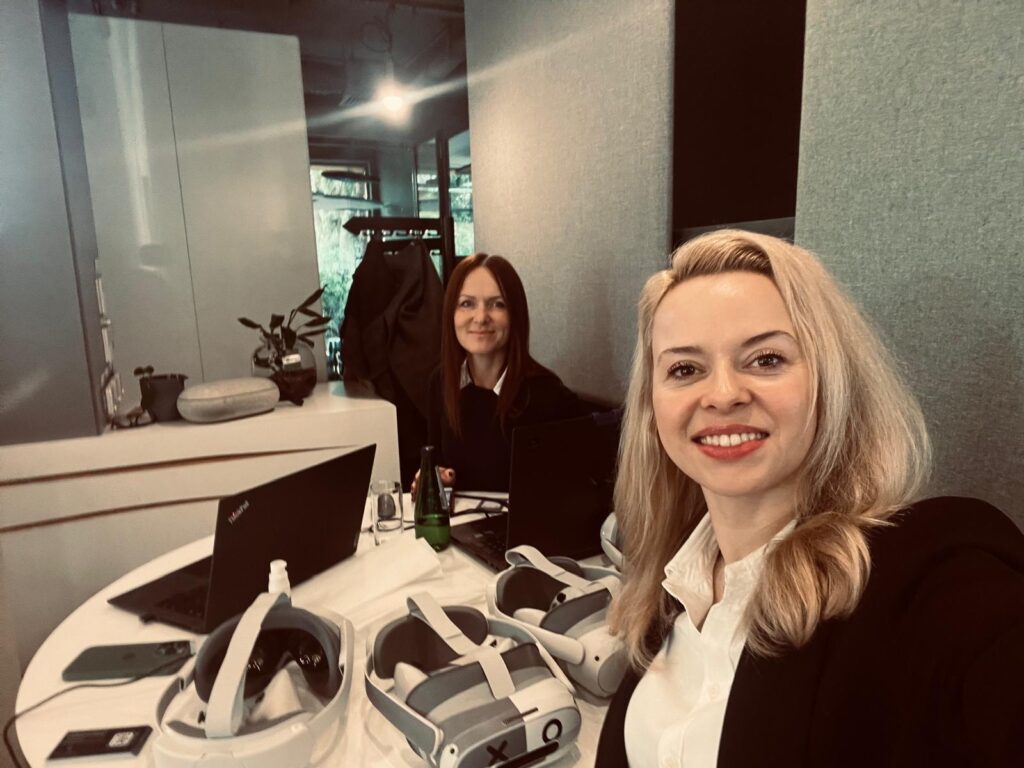Virtual Fitting Rooms – how do they work?
Table of Contents:
The coronavirus pandemic influenced many aspects of our day-to-day lives. One area which changed a lot was shopping, where due to sanitary restrictions, many people began to shop more online. Unfortunately, when a product ordered online arrives, it does not always match your expectations, especially in the case of clothes. In many cases, it is only after the items have been tried on that the purchaser realizes that they are the wrong size. In the case of online shopping, this translates into dissatisfied customers and items being returned, negatively affecting the profitability of the business. However, brick-and-mortar stores also have their limits as customers often need to try on many clothes before buying them, which can be time consuming and problematic. Fortunately, virtual fitting rooms have come to the aid of the fashion industry. But how do virtual fitting rooms work? And which companies should take advantage of such innovations? Read the article below to find out!
Virtual fitting room – what is it?
Virtual fitting rooms offer a groundbreaking way to try on clothes. They allow you to compose your own outfits and prepare a list of items to be purchased as you go along without actually having to spend time putting them on. How is this possible? Virtual fitting rooms achieve this through the combination of virtual reality, augmented reality, and artificial intelligence. For example, with the help of webcams and artificial intelligence, a full-size 3D model of each shopper’s figure can be created so that clothes can be fit to the model rather than the individual trying them. In this way, virtual fitting rooms simplify the process of choosing and buying clothes
How does a virtual fitting room work?
The principle of the VR fitting room is quite simple, provided that these new technologies are properly used. The customer stands in front of an intelligent mirror that recognizes their pose and measurements. Using their hand as a remote control, the customer can select different clothes, which appear on the reflection in front of them. With a flick of the wrist, they can change the color of different items to create sets of clothes that match. Once they are happy with what they see, they can find the garments in the store and check how they look directly or go straight to the checkout with their shopping list. In this way, the customer can shop more quickly and efficiently, saving them from tiring shopping experiences, so the chance of them buying more products increases significantly. Similarly, virtual fitting rooms can be used by online shoppers. Through the use of a simple app, they can have the same experience at home, trying clothes on their 3D model just like they would in the shop.
Unlock the future with Mazer: Your innovation partner.
Virtual fitting room – why should you use it?
Increasing customer satisfaction
Sometimes photos of clothes on websites do not reflect their actual cut and appearance. Depending on the monitor settings, colors can also come out differently. However, with a virtual fitting room, customers can try clothes on without leaving home. This can reduce the number of unsuccessful fashion choices because you can check how you look in a given color and whether a particular pattern or cut fits your figure and your tastes.
Aggregating customer data
Virtual fitting rooms can be a valuable source of information because they collect important customer data that can then be analyzed. For example, retailers can track trends and find out which garments are the most popular based on those selected. As a result, specific colors, sizes, or models can be stocked to increase the business’s profitability and minimize the risk of returns. With the help of VR fitting rooms, it is also easier to gather customer feedback on the clothes they bought or rejected through surveys.
Combining offline and online commerce
In addition to the possibilities of using virtual fitting rooms in brick-and-mortar stores, there is also the possibility to adapt similar solutions to online stores. All it takes is a selfie, some body measurements, and an app to take the shopping experience to a whole new level.
Virtual fitting rooms – discover the benefits
There are many benefits to using virtual fitting rooms. The most important thing for customers is that they always have a fitting room available if they like online shopping. Then, coming home on the subway or bus, they can launch the app, browse, and try on any products; take a photo and send it to a friend for advice, and then make a purchase. In the case of physical stores, virtual fitting rooms can enhance the shopping experience as customers do not have to try on loads of different clothes in cramped fitting rooms.
From the retailer’s perspective, virtual fitting rooms significantly reduce the number of returns of ill-fitting products, thus increasing business profitability. Moreover, customers are more satisfied with their purchases and happier to return and share their experiences with others, which promotes liquidity. So, virtual changing rooms are a great option for any store that cares about steady and resilient growth. Companies such as XR Wizards are already creating solutions for brick-and-mortar stores and online shops, with their Mazer platform.
Read also: The Music Industry In The Metaverse
What is a virtual fitting room?
A virtual fitting room is a technology-driven solution that enables customers to try on clothes virtually using a combination of virtual reality (VR), augmented reality (AR), and artificial intelligence (AI). It simplifies the clothes selection and purchase process.
How does a virtual fitting room work?
Customers stand in front of an intelligent mirror that recognizes their pose and measurements. Using hand gestures, they can select and visualize different clothing items on their reflection, change colors, and create outfits.
What are the benefits of using virtual fitting rooms for customers?
Customers benefit from the convenience of trying on clothes online, receiving advice from friends, and making informed purchases. It eliminates the need for trying on multiple items in crowded fitting rooms, improving the overall shopping experience.
How can virtual fitting rooms benefit retailers?
Retailers can significantly reduce returns of ill-fitting products, increasing profitability. Satisfied customers are more likely to return and share positive experiences, promoting business growth and liquidity.
Unlock the future with Mazer: Your innovation partner.

Author: Rafał Siejca
Rafal has over twenty years of corporate experience, including roles at Millennium Bank, Comarch, and leading software teams at PZU, one of Europe’s largest insurance companies. As one of Poland’s few true VR experts with a decade of experience, he ensures timely, high-quality project delivery as CEO and CTO.










